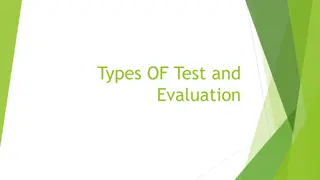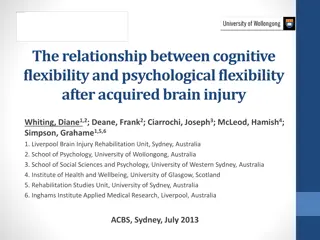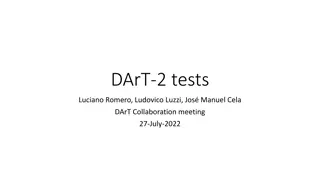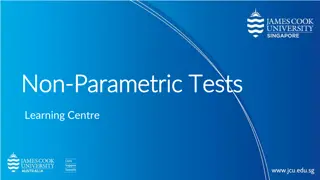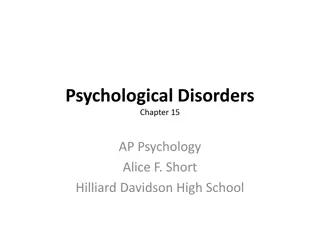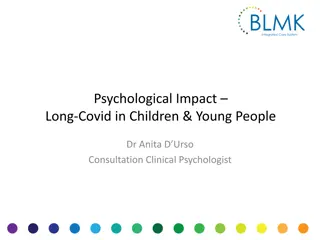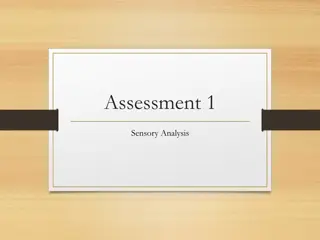Understanding Different Types of T-Tests in Psychological Research
This article provides an overview of different types of t-tests used in psychological research, including independent t-tests for comparing two groups, paired or correlated t-tests for within-group comparisons, and the assumptions behind conducting these tests. It also includes examples of when to use each type of t-test and how to interpret the results, illustrated with real-life scenarios and statistical outputs.
Download Presentation

Please find below an Image/Link to download the presentation.
The content on the website is provided AS IS for your information and personal use only. It may not be sold, licensed, or shared on other websites without obtaining consent from the author. Download presentation by click this link. If you encounter any issues during the download, it is possible that the publisher has removed the file from their server.
E N D
Presentation Transcript
Types of T-tests Independent T-tests Two independent groups that are mutually exclusive Paired or correlated t-tests One group with two measures over time
T-test Assumptions Both Dependent and Independent T-tests Data are measured at the interval level Normal distribution of the dependent variable. Independent t-test The independent variable is categorical and two levels (groups) two mutually exclusive groups. Variance of the two groups is similar homogeneity of variance Levene s test Null Hypothesis: There is no difference in the variance between the groups. Scores are independent (come from different people)
Practice: Which T-test does one use? Hypothesis: People who are exposed to a real spider will report a higher anxiety level than those who are exposed to a picture of a spider. Hypothesis: Female nursing students will have a higher score on a scale assessing the perception of the image of nursing than male students. Hypothesis: The number of cigarettes smoked per day will be lower following a cessation intervention.
Example: Independent t-test Research Question: Do nonsmokers differ from smokers on their perception of overall health? Two different groups of people are being compared: smokers vs nonsmokers
Overall Health Scores t-Test results n Mean Std Dev T df p Nonsmokers 45 155.00 26.43 0.004 2.93 88 Smokers 141.00 36.57 45 OUTPUT What to look for: 1.group statistics. We see that the mean health score for the nonsmoker group is 155.00 (SD 26.43) and for the smokers the mean is141.00 (SD 36.57). 2. T statistic which is 2.93 3.The df (degrees of freedom) are 88. This is calculated by subtracting one degree of freedom from the n of each group (NS group 45-1 = 44, S 45-1 = 44) and then adding the result (88). Finally, with alpha set at .05, we conclude that p=.004 is statistically significant (p<.05) and therefore that there is a statistically significant difference between the mean health scores of the smoking groups. On average, nonsmokers have a higher score.
Example: Paired t-test Research Question: Is there a significant change in subjects anxiety levels when they are exposed to a picture of a spider versus a real live spider? The same people are being compared at two different times. Time 1 (spider picture) vs time 2 (live spider)
Anxiety Scores t-Test results n Mean Std Dev T df p Real Spider 12 47.00 11 0.031 11.02 2.47 Photo 40.00 9.29 12 The above table contains statistics for a paired sample. There are 12 patients in the sample and based on these results all 12 patients participated at both time periods. 1. The mean anx score for spider was 47 (SD 11) and the mean anx for viewing a photo of a spider was 40 (SD 9). 2. Next look at the value of the paired samples test, t=2.47, df=11, p=.031 and determine that the p-value is significant since the actual probability of this result is <.05. 3. Thus, the null hypothesis is rejected. We conclude that there is a statistically significant difference in anxiety scores and viewing a photo or being exposed to a real spider. The photo produced less anxiety.


